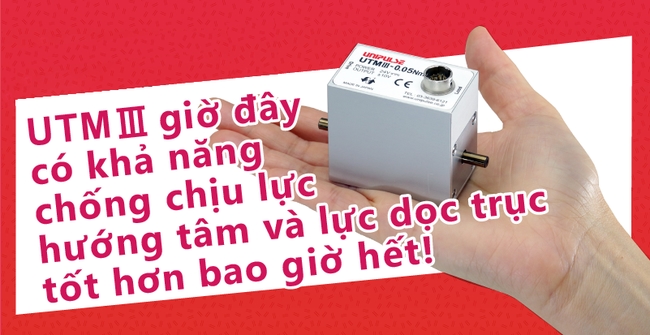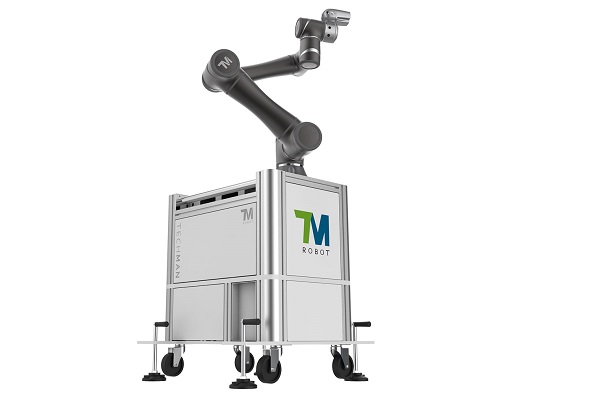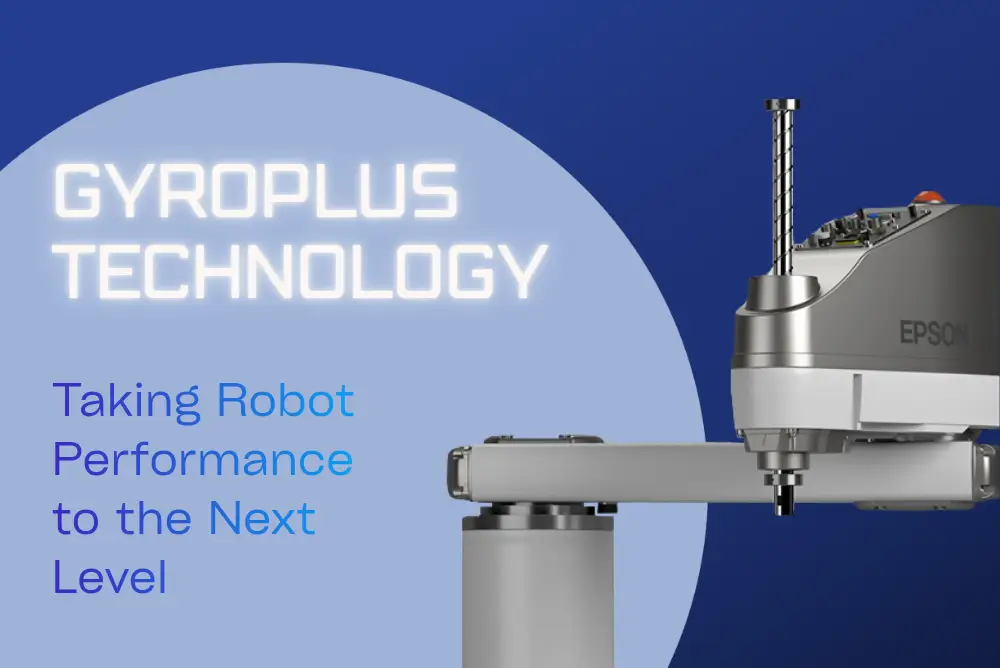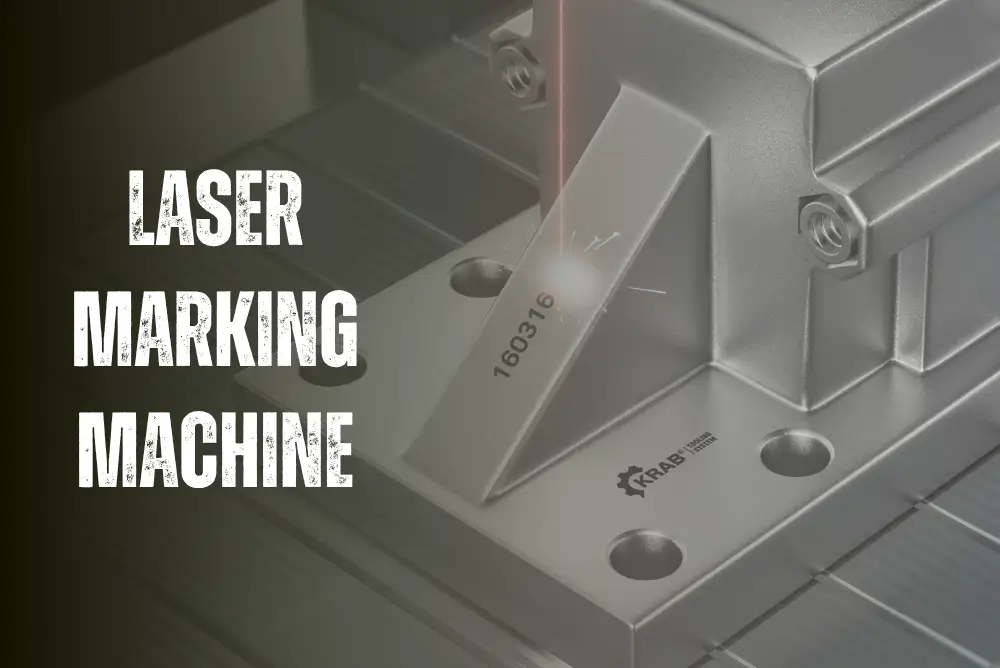UTMIII is a small and lightweight torque meter that achieved non-linearity of 0.03%FS, max. rotation speed of 25,000 rpm and safe overload of 500%.
It has been used in various applications such as motor test bench, automation for sensory test and so forth.
This time, we quantified the influence that radial and thrust loads exert on effective accuracy.
Radial N and Thrust N of permissible shaft end load are the values guaranteeing that influence for torque output is less than 0.03% when those loads apply.
Why thrust & radial load are applied at torque meter?
When using a torque meter, a shaft and another shaft need to be interlocked. However, it is impossible to install them completely both in concentricity and parallel. Misalignments on shaft center such as eccentricity, deflection angle, end play and such remain for certain.
The devices that absorb radial and thrust loads caused by such misalignments are couplings. But even the couplings cannot completely absorb such radial and thrust loads due to shaft misalignments. Thrust and radial loads remains even on the main unit of torque meters.
UTMIII: Less influence by radial & thrust load
For small capacity of UTMIII, single-shaft gauge is installed. Meanwhile for mid- and large capacity, shear gauge is installed.
Both gauges detect strains with Wheatstone bridges.
Let's suppose we wire a Wheatstone bridge in the following manners; Compression strain to be applied at the gauge #1 and #3 and tension strain to be applied at the gauge #2 and #4 on the illustration above when right-twist torque is applied. By doing so, it works as if outputs are cancelled out against spring of shaft (radial load) or compression/tension (thrust load).
In short, output will not change against radial and thrust load theoretically.
However in truth, influences caused by such radial and thrust loads still remain due to small bonding mispositions and bonding angle misalignments of strain gauges.
Especially mid- to large capacity UTMIII uses shear gauges, which is sensitive to installation angle, thus tends to be affective to radial and thrust loads.
The important thing for a countermeasure against it is the symmetry between an angle against the shaft of the strain gauge and a position of the strain gauge.
If they are in perfect symmetry, the influences will be cancelled out and will not appear on the output.
This time, we improved the placement accuracy in angle for strain gauges to a large extent by mean of a new manufacturing process.
With the measures, influences that radial and thrust load exert on accuracy were dramatically reduced.
Below illustration shows a comparison of the influences that occurs on the torque meter manufactured with the conventional process and with the new process.
Here, we fixed one shaft end of UTMIII-2Nm, so that the shaft will not rotate. Then, we applied 7N radial load on another shaft end through the bearing.
Load was applied through the bearing to avoid torque to be generated.
With UTMIII manufactured by conventional process, output value changes 0.1% at maximum. On the other hand, with UTMIII manufactured by new process, output value changes less than 0.01%.
As the variation in permissible shaft end load will be prevented by specification, high accuracy torque measurement can be performed with confidence.
Read more: Specifications of UTMIII
Technical questions and answers for rotary torque meter Unipulse UTMII & UTMIII series
With a team of engineers with expertise, experience and long-term relationships with major partners in the field (Unipulse), Temas is always confident to bring the best solutions at reasonable prices to customers for specific application. Temas helps your business succeed in the industrial manufacturing industry. Visit our blogs to know more about manufacturing automation and Industry 4.0.


 Read more
Read more



